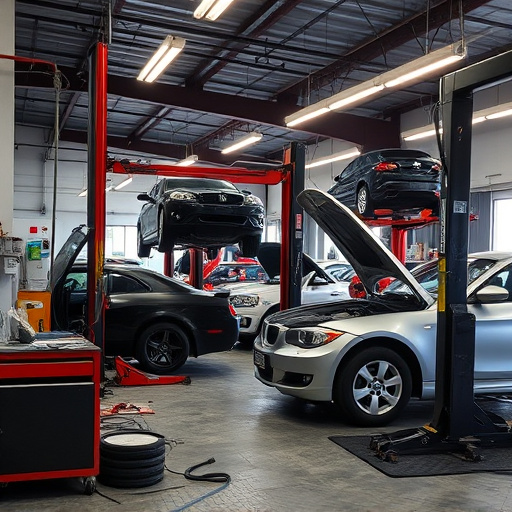Repair Authorization Service: Navigating Legal Compliance Fairly

A Repair Authorization Service (RAS) is a key tool for auto businesses, ensuring legal compliance in…….
In today’s complex and interconnected world, efficient and effective repair authorization services have become a cornerstone of numerous industries. This article aims to dissect and explore the intricate workings of repair authorization services, shedding light on their significance, global impact, and future potential. By delving into its various facets, we will equip readers with a comprehensive understanding of this critical process and its far-reaching implications.
Definition:
Repair authorization service (RAS) refers to the structured process by which businesses or organizations authorize and manage the repair or maintenance of their products, ensuring compliance with warranty policies and regulatory standards. It involves a systematic approach to delegate repair tasks, control costs, and maintain customer satisfaction.
Core Components:
Historical Context:
The concept of RAS evolved as complex consumer goods and machinery demanded specialized knowledge for repairs. Historically, manufacturers often provided in-house repair services or limited authorization to select dealers. However, with globalization and the rise of e-commerce, the need for centralized, standardized repair systems became imperative. This led to the development of sophisticated RAS platforms that facilitate real-time tracking, data analysis, and remote diagnostics.
International Reach:
Repair authorization services transcend geographical boundaries, impacting businesses and consumers worldwide. The global nature of supply chains and the increasing popularity of international e-commerce have driven the demand for streamlined RAS solutions. Companies like Apple, with its global iService programs, and car manufacturers like Toyota, with its extensive service network, showcase the international influence of RAS.
Regional Variations:
Different regions have unique approaches to RAS, influenced by cultural, economic, and regulatory factors:
Market Size and Growth:
The global repair authorization service market has experienced significant growth, driven by several factors:
| Region | Market Size (2022) | Projected Growth (2023-2028) |
|---|---|---|
| North America | $15.7 billion | 6.2% CAGR |
| Europe | $12.3 billion | 5.5% CAGR |
| Asia-Pacific | $24.5 billion | 7.8% CAGR |
| Rest of the World | $6.2 billion | 6.5% CAGR |
Investment Patterns:
Investments in RAS often focus on:
Digital Transformation:
Technology has revolutionized RAS, enabling real-time data exchange, automated processes, and enhanced customer experiences:
Internet of Things (IoT):
The integration of IoT in RAS is transforming product monitoring and repair:
Artificial Intelligence (AI) and Machine Learning:
Warranty and Consumer Protection Laws:
Stringent regulations in many countries mandate comprehensive warranty policies and efficient RAS systems to protect consumers:
Environmental Regulations:
RAS must also adhere to environmental standards, especially in the manufacturing and disposal of products:
Data Privacy and Security:
With digital transformation comes the need for robust data protection measures:
Common Challenges:
Proposed Solutions:
Case Study 1: Apple’s iService Program
Apple has consistently set the bar for customer service with its iService program. By centralizing repair authorization and offering a global network of authorized service providers, Apple ensures consistent quality and convenience. The company’s online tool allows customers to check coverage, find nearby repair centers, and schedule appointments, fostering a seamless experience. This case highlights the importance of a well-integrated digital platform and global reach in delivering exceptional RAS.
Case Study 2: Toyota’s Global Service Network
Toyota Motor Corporation has built an extensive service network, ensuring that its vehicles receive reliable and consistent repairs worldwide. Their authorization system is designed to maintain high standards while optimizing costs. By leveraging technology for remote diagnostics and training programs for technicians, Toyota has achieved a high level of customer satisfaction and loyalty. This demonstrates the power of combining advanced technology with robust training initiatives in RAS.
Case Study 3: Samsung’s Digital Transformation
Samsung Electronics adopted a digital-first approach to repair authorization, developing a comprehensive online platform for customers and technicians. The system enables real-time tracking, remote diagnostics, and efficient parts ordering. This transformation improved customer satisfaction by reducing repair times and enhanced Samsung’s reputation for customer-centric service. This case study emphasizes the benefits of digital innovation in enhancing RAS efficiency.
Technological Advancements:
Sustainability and Circular Economy:
Global Standardization:
In conclusion, repair authorization service is a dynamic and evolving field that plays a critical role in supporting global supply chains, ensuring consumer satisfaction, and driving sustainable practices. As technology advances and global connectivity grows, RAS will continue to adapt and innovate. By embracing emerging trends, addressing challenges head-on, and prioritizing customer needs, the repair authorization industry can forge ahead, contributing significantly to economic growth while maintaining high standards of quality and environmental stewardship.
Q: How does RAS differ from traditional after-sales service?
A: While both focus on post-sale support, RAS is a structured, authorized process for repairs, often involving centralized management and detailed documentation. Traditional after-sales service can be more flexible and may include various types of support beyond repairs, such as product demonstrations or customer care.
Q: What are the benefits of digital transformation in RAS?
A: Digital transformation enhances efficiency through real-time data exchange, automated processes, and remote diagnostics. It improves customer experiences with online repair request initiatives, trackable progress, and customizable notifications. Additionally, it enables better inventory management and cost optimization for businesses.
Q: How can RAS contribute to environmental sustainability?
A: RAS can promote sustainability through eco-friendly practices like recycling, proper disposal of electronic waste, and the adoption of energy-efficient repair processes. The integration of blockchain technology can also ensure the traceability of spare parts, reducing counterfeiting and promoting responsible sourcing.
Q: What role does customer satisfaction play in RAS?
A: Customer satisfaction is paramount in RAS as it drives brand loyalty, positive word-of-mouth, and repeat business. Efficient, convenient, and transparent repair processes contribute to high levels of customer satisfaction, fostering a strong reputation for the organization providing the RAS.

A Repair Authorization Service (RAS) is a key tool for auto businesses, ensuring legal compliance in…….

A repair authorization service (RAS) is vital for auto body shops, ensuring compliance with regulati…….

A Repair Authorization Service (RAS) is crucial for automotive businesses, ensuring legal compliance…….

A repair authorization service (RAS) is essential for auto businesses to comply with vehicle mainten…….

The repair authorization service simplifies post-accident vehicle repair coordination by providing a…….

Streamlining repair authorization service processes through workflow optimization, digital document…….

The current repair authorization service landscape suffers from inefficiencies and human errors due…….

A Repair Authorization Service (RAS) streamlines auto repair processes by facilitating communication…….

Customer loyalty in the automotive industry is driven by transparent, efficient repair processes fac…….